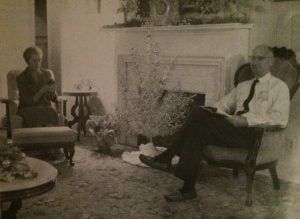Show Me
There’s a reason Missouri is the “show me” state and why we have old sayings like, “Seeing is believing” and “A picture’s worth a thousand words.” It’s because somewhere along the way, years and years and years ago, someone figured out that the best way to convince a person of something was to show it to them. After that point, there could be no arguing, no denial, no declaration that such an event had not occurred or such a thing did not exist. They had seen it with their own eyes and, from then on, it was real.
So, why is it that works with everything but death—or does it? Generations ago families and friends sat up with the dead for days on end, but given the state of medical science at that time, it was understandable. They were, among other things, carefully watching for any sign of life since death was not so easily diagnosed then. But today that’s not the case, so why put yourself through the ordeal of holding—or attending—a visitation with an open casket? Surely we’re all mature enough to know that a death has occurred, that someone near and dear to us will no longer be physically present in our lives. Of course we are. But knowing and believing are two entirely different things.
A child can know that the red burner on the stove is hot and it’s going to hurt if they touch it. We can know the paint is wet because there’s a sign hanging there that tells us it is. So what do we do? Well, if we’re like most of the rest of the world, we touched the burner at least once after being warned repeatedly not to and, yes, we stuck our finger in the paint . . . and ended up leaving our fingerprint for all eternity. As human beings we test those things that cannot or have not been proven by our senses—and death is no different
Knowing that someone has died becomes undeniable once it is seen. That first viewing triggers an avalanche of emotions, all of which culminate in belief. We are forced to acknowledge our loss and to confront the pain and the emptiness that their death brings. Is it easier to avoid that rush of emotions and the ache that they bring? Of course it is—at first. But to avoid the acknowledgement of death is to invite a lifetime of pain. As human beings, we are made to form attachments to others. Even as infants we must form that bond if we are to survive. Such a strong dependence cannot be dismissed without consequences, and those consequences range from prolonged and unnatural grief to physical, mental, and emotional illness. That first viewing is the first step to acceptance of a future without that person.
Which brings us to a last observation—one we have made before. When someone asks you what you want at your funeral (and yes, it will happen if you live long enough), tell them you want whatever they need. Too often family members start making demands and requiring promises as death approaches. “I don’t want people lookin’ down at me.” “I don’t want them parading by my casket and gawking.” Those people “parading by” and “gawking” are your family and your friends. They won’t be there to stare at you. They will be there to honor your memory, to support your closest family, to share in the loss and the memories of a life lived. They will be there to say good-bye . . . and, if you think about it, in life and in death, saying good-bye is always more meaningful when it is done face to face.
The post Show Me appeared first on Shackelford Funeral Directors | Blog.












